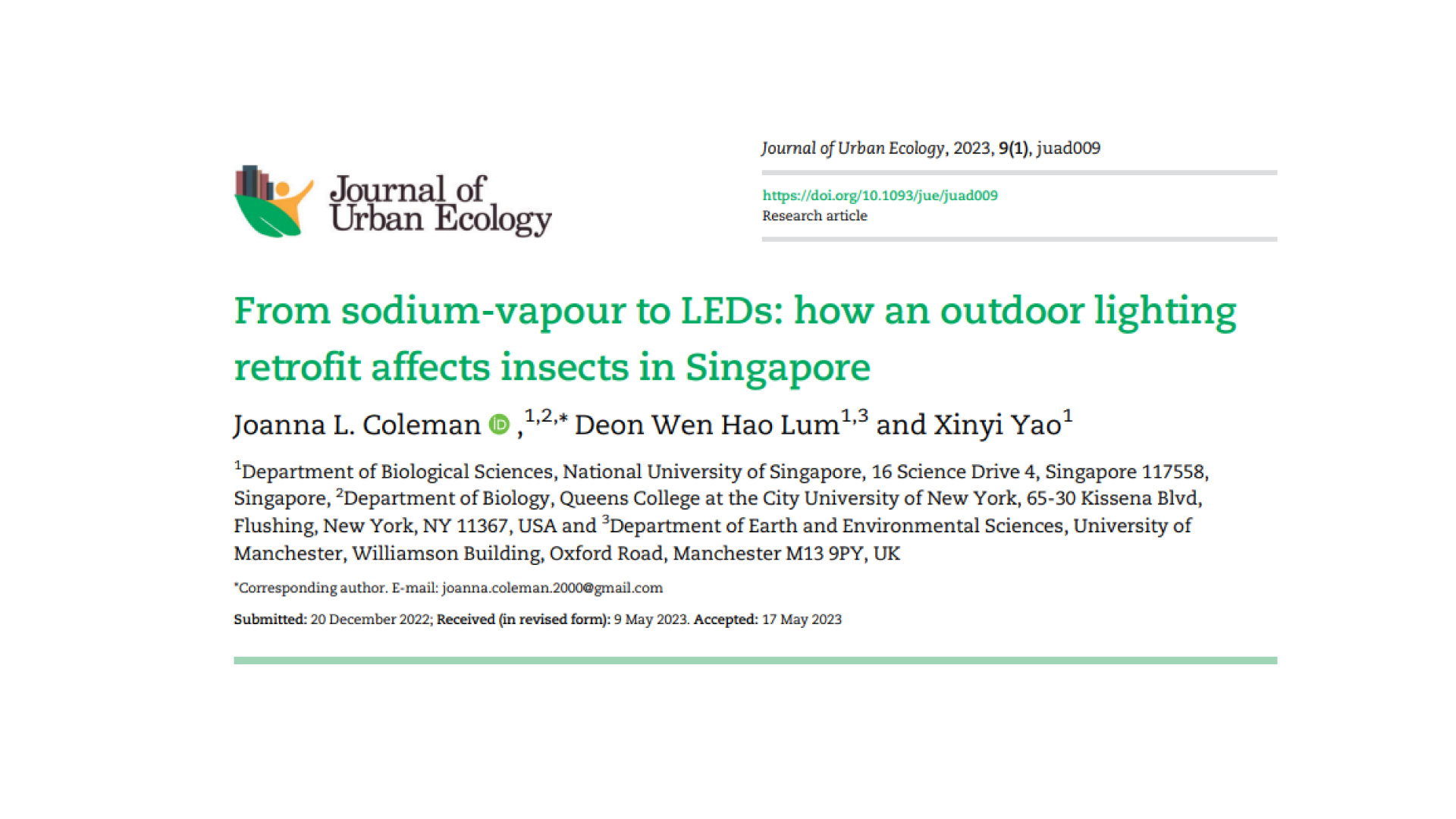We worked along pedestrian footpaths (3.5m tall luminaires) in Singapore and found that shifting from sodium-vapour to LED lights is not detrimental to most insects in most sites (meaning, the LEDs are no more attractive to them). This work complements our prior study, in which the same retrofit, but along streets (6m tall luminaires), did not affect most bats (probably because bats were not hunting at those streets).
I originally designed both studies as a twinned project, based on my observation that the impacts of light pollution had mostly been studied in fairly dark rural areas of the temperate zone. So, now we have two, rare studies in the world’s most light-polluted nation and the only fully urbanised, tropical ecosystem.
And the findings illustrate (to me at least) the importance of context (biome, landscape, development level) in urban ecology. This is the same core argument I advanced when I proposed to study bats in the Prairies for my PhD and hypothesised that urbanisation might benefit them by improving the availability of insect prey and roosts and increasing the ambient temperature. My data generally did not support that hypothesis.
This article also highlights the problem of publication bias (the tendency of journals to only publish significant results, i.e., that let us reject the null hypothesis). Publication bias can prevent studies like these being published (in fact, one reviewer of this paper suggested it not be published for that reason).
But a finding of no effect matters. Here, we are talking about the adoption of technologies that can substantially reduce the carbon footprints of various entities, especially cities, where outdoor lighting can significantly influence total energy use. Yes, we must consider the potential ecological harms of these and other sustainability initiatives. But we must be pragmatic.
As the urgency of the climate crisis becomes impossible to ignore, decision makers need to know when their sustainability (and cost-saving) efforts are likely to be less harmful. Our study does not provide a blanket endorsement of LED-lighting retrofits in all contexts. But so much biodiversity resides in Singapore and many other densely populated tropical cities. Therefore, we call for more studies like this (to know how widely our findings apply and test the impacts at different types of luminaires), and studies to compare the environmental benefit-cost tradeoff of lighting decisions.

